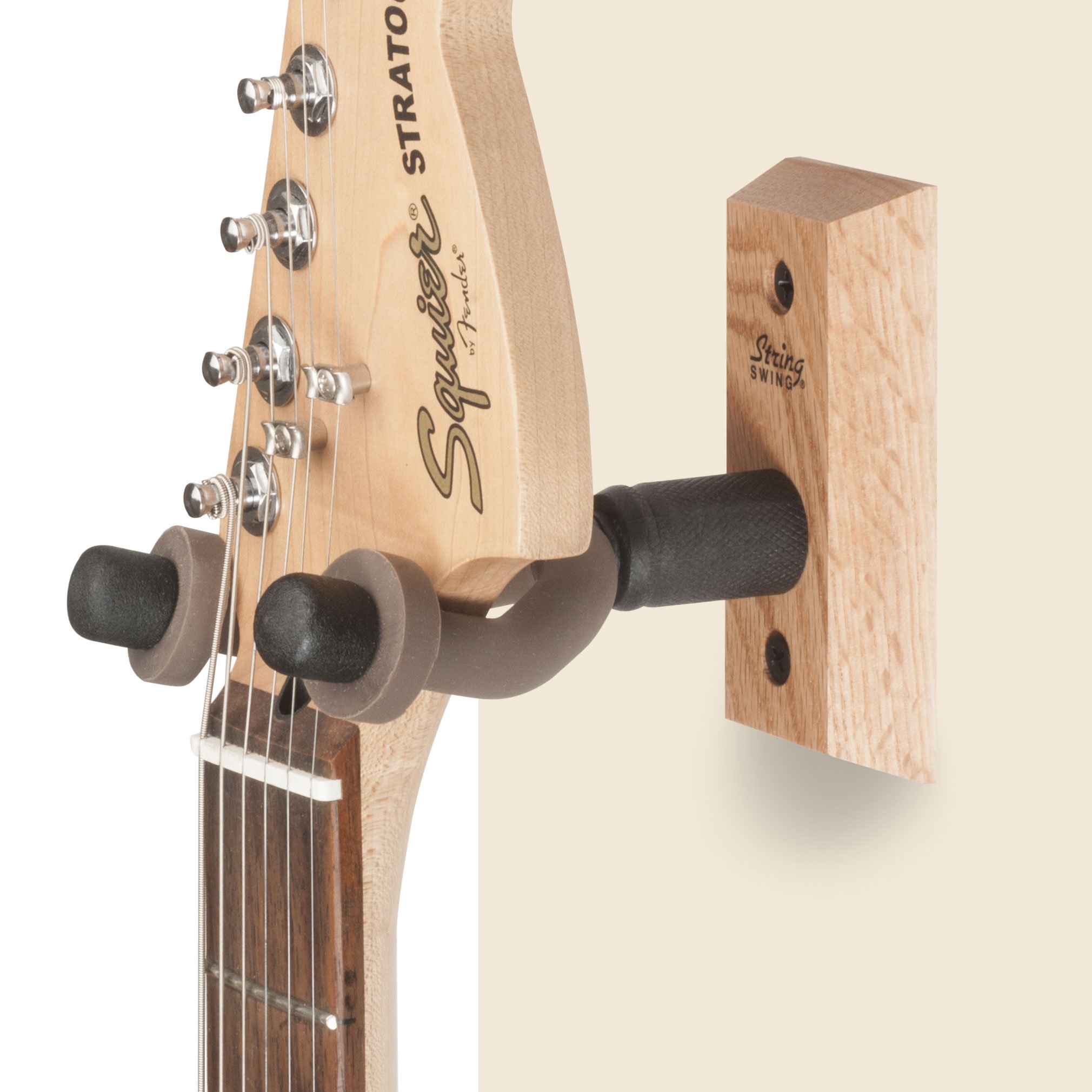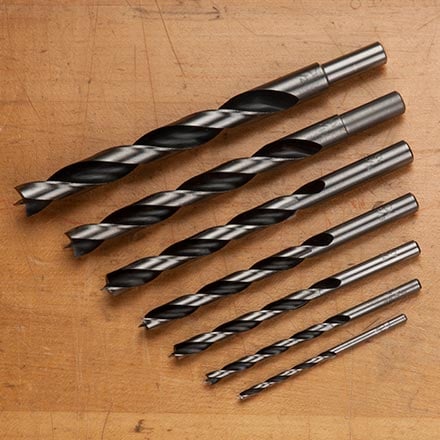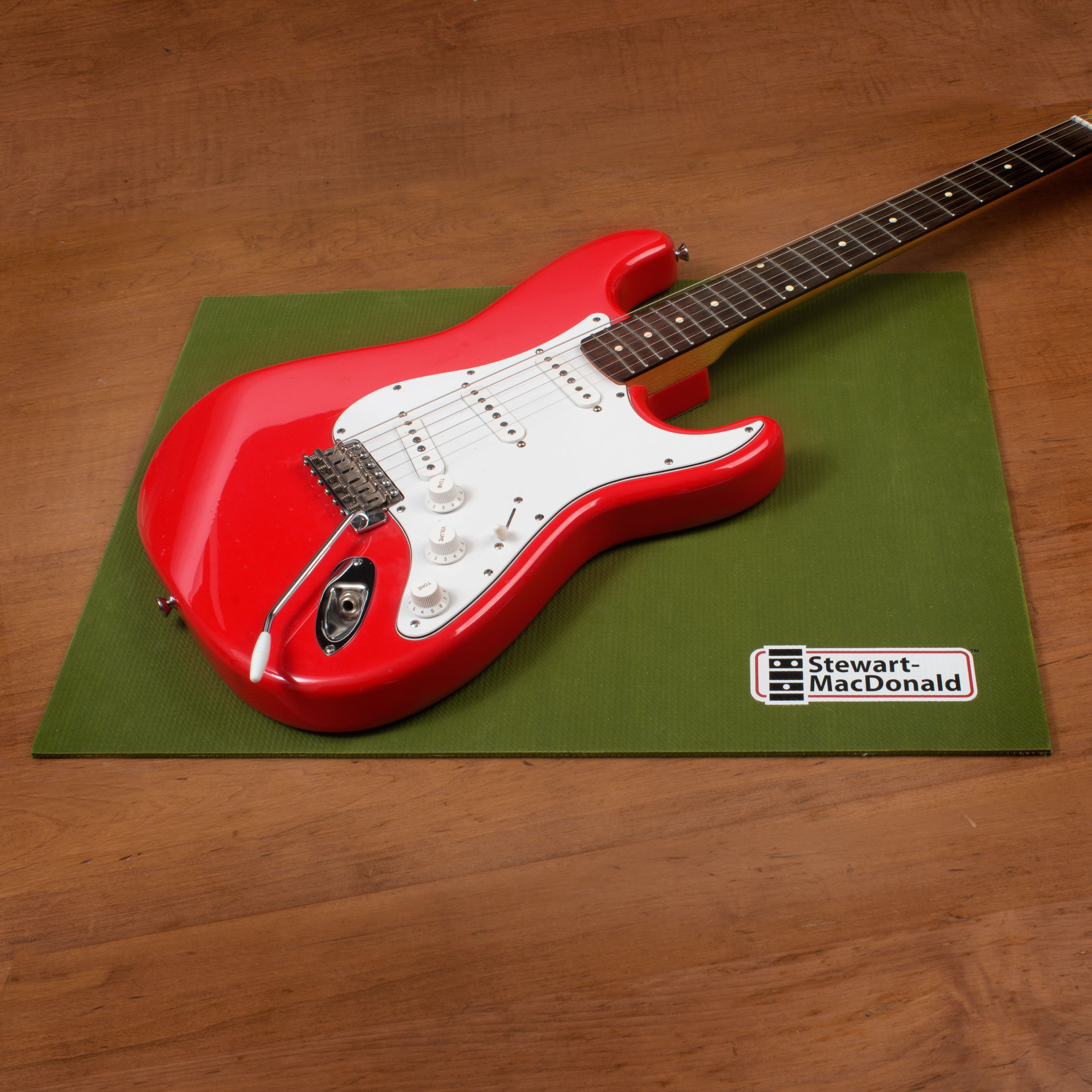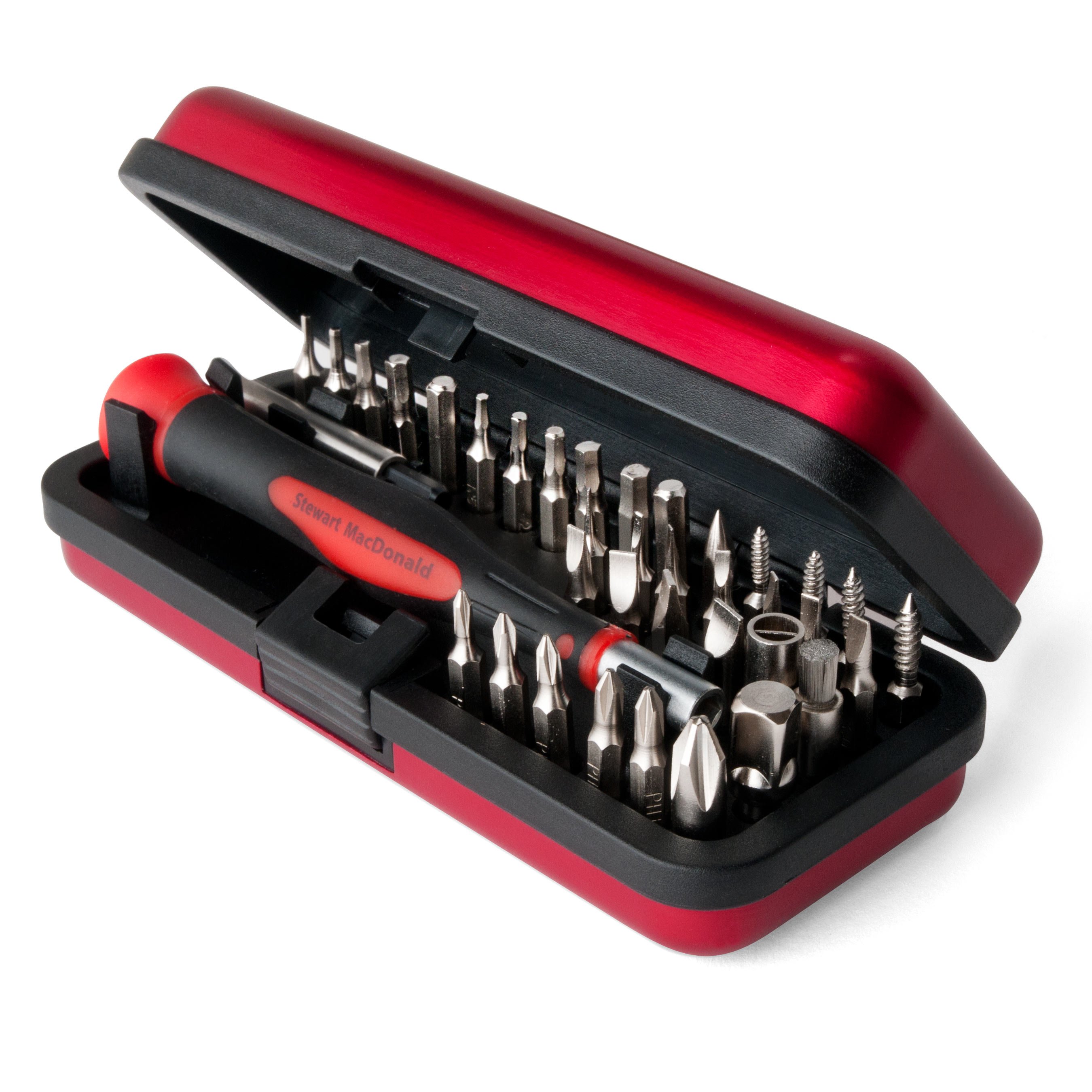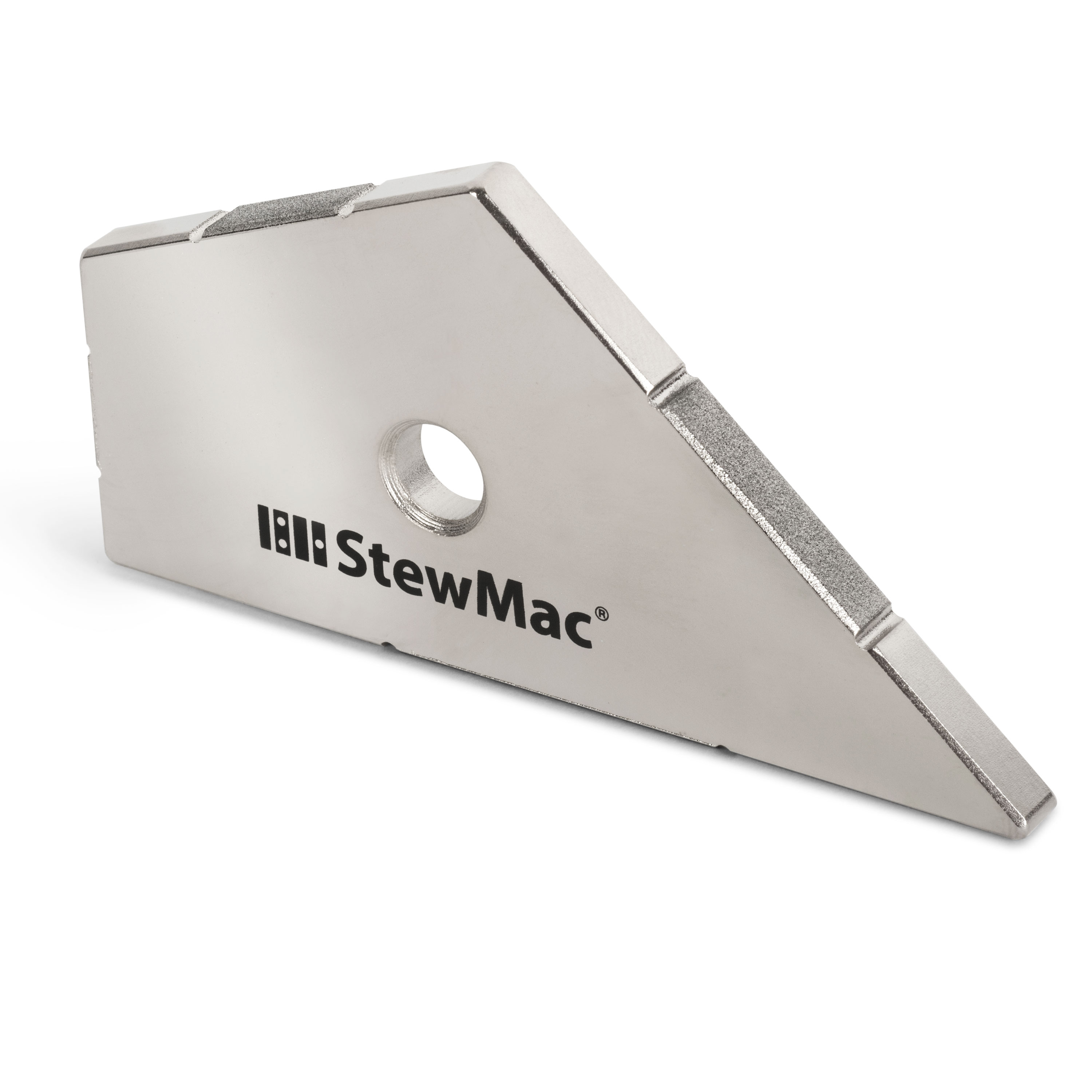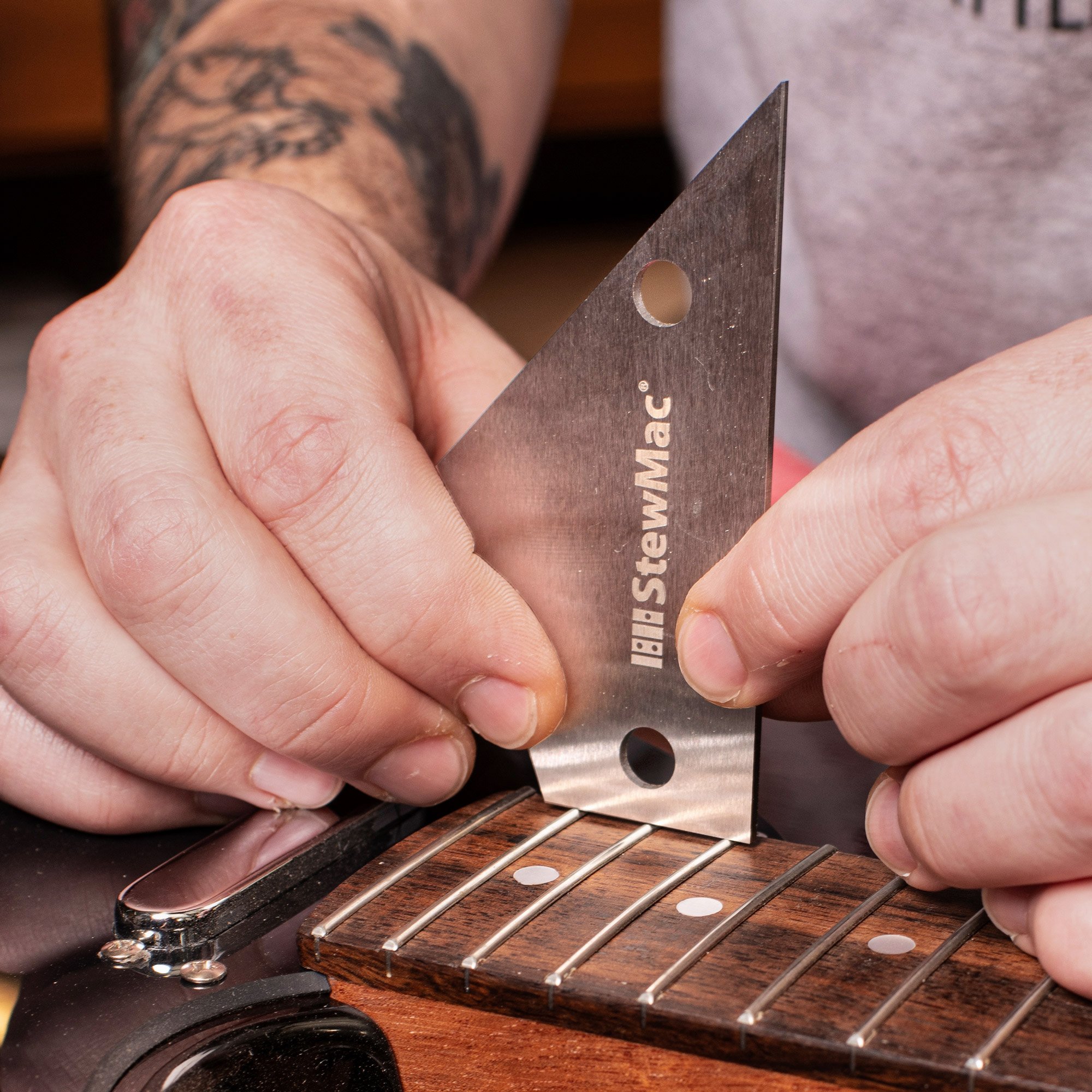How to Hang a Guitar on the Wall
The key to wall mounting a guitar is figuring out what kind of wall you have. This video shows three different methods for hanging a guitar including a little trick from Dan Erlewine for mounting a guitar on a brick or concrete block wall. Also discussed are considerations for deciding where to hang your guitar. With the String Swing, a level and a drill, you can mount a guitar on the wall quickly and easily.
Aaron Smiley: Most guitar hanger products already come with all the hardware that you need to get started. So. in most cases, all you need is a hand drill and your guitar. Now, there are a lot of guitar hanging products out there, but most of them are pretty similar. They usually have a U-shaped handle that the headstock of the guitar actually sits on, and then that is mounted to a block, which is then mounted to your wall. My personal favorite is the String Swing Guitar Hanger. It's a great hanger that's really sturdy, and it comes with the screws and drywall anchors if you need them right out of the box. You may already have an idea of where your guitar would look best, but it's worth reconsidering where you hang it based on a couple of different factors.
Where should you hang your guitar?
First of all, is your guitar going to be hung in a high-traffic area? People are walking by it a lot or standing around, it could easily lead to the guitar falling off the stand and crashing to the floor. Second of all, is there going to be sunlight shining on the guitar? Guitar finishes can be pretty sensitive to UV rays, so avoiding direct sunlight is always a plus. Lastly, is the room that the guitar is going to be in pretty consistent as far as humidity and temperature are concerned? Guitars can be pretty susceptible to changes or extreme conditions. But generally speaking, if you're comfortable in the room, the guitar will be too.
How we go about installing the hanger is going to depend on what kind of wall you're installing it into. So first, we're going to talk about studs.
Stud installation
I always advise mounting the wall hanger onto a stud in the wall if you can. It's just the most secure way to do it and gives you that peace of mind. Once you've found the stud in the wall, you can line up the hanger block where you want it to be. And I like to use a level just to make sure that it's lined up nice and square. It just looks better that way.
Next, mark out through that block where you're going to be drilling into the stud. The stud's not going to let you just drive that screw in with just a screwdriver. You're going to need to drill a pilot hole first. You want to make sure that you select a drill bit that's slightly smaller than the threads of that screw, or just a little bit bigger or the same size as the core of the screw. I like to use a piece of tape on the drill bit as a depth stop to make sure that I don't drill too far. And once I have that, just use the marks that you made earlier to drill the pilot holes. Tighten down the screws to mount the block in place, put the hanger on, and put your guitar up.
Drywall Installation
If you wanted to mount the guitar where there isn't a stud, you can always mount it directly into the drywall if you have the right stuff. Some guitar hangers that have drywall anchors included in the box, they kind of look like this. From there, it's the same as the first method. You just line up the block where you want and then mark out where the holes are going to be with drill bit or a screw. Now, some drywall anchors do need a pilot hole, but there are some that can just be screwed right into the drywall. It just depends on what you have. From there, just drive the screws in place to mount the block on the wall and hang your guitar up. I usually like to put the guitar and test it first just to make sure that everything's going to hold.
Backer board installation
Another option is to use a backer board, which can be great for hanging a lot of guitars really close to each other. This can be especially useful for your shop if you're trying to maximize space. First thing to do is to measure the space that you're working with and make sure that you get a board that's the right dimensions. Usually, you want to get something that's as tall as the hanger block that you're using, and about three quarters of an inch thick so it's sturdy enough to hold those hangers in place. This board will be mounted using the studs that are in the wall. Once you have the backer board securely mounted to the wall, then you can put the hangers at any distance you want from each other. But it's always a good idea to leave a little bit of extra space more than you think you'll need in case you bring in any larger body guitars because you don't want them bumping into each other.
Brick and block installation
If you have brick walls, don't worry, you can still mount guitar hangers on those as well. If you have a hammer drill, you can just drill directly into the brick. But if you don't, fret not, you can actually drill into the mortar between the bricks using a regular hand drill. Here's a cool trick that Dan Erlewine taught me for drilling into the mortar. You're going to need two masonry bits, a 3/16" bit for the pilot, the 3/8" for your final diameter, and then get a wooden dowel that's also 3/8". Once you have the pilot drilled to about an 1.5" inches deep should be enough, follow with the 3/8" bit and also drill it 1.5" inches deep.
Once you're done with that, just vacuum or blow out all the dust so you make sure the dowel is going to seat all the way. And then, make sure you cut it to the right depth and start hammering it in. We're basically treating the dowel like it's a stud, so we mark it out again, drill the pilot for the wood screw, and then fasten down the block as we would normally. Now you're done. Your guitar is hanging on the wall for everyone to see. All that's left is to get more guitars and hang those too. People around you will say, "You have too many guitars." And you'll say, "I have like 10." Then it becomes 11, then it becomes 12, then 15, then 20, then 30. It never stops. Get out now. You're not safe!

